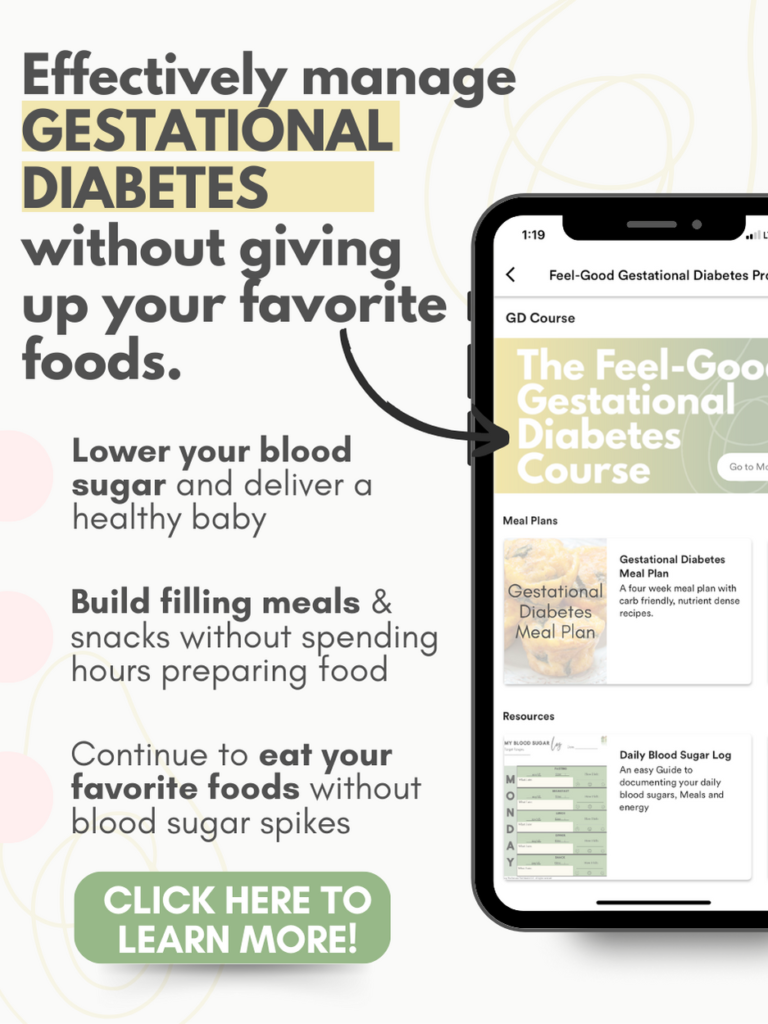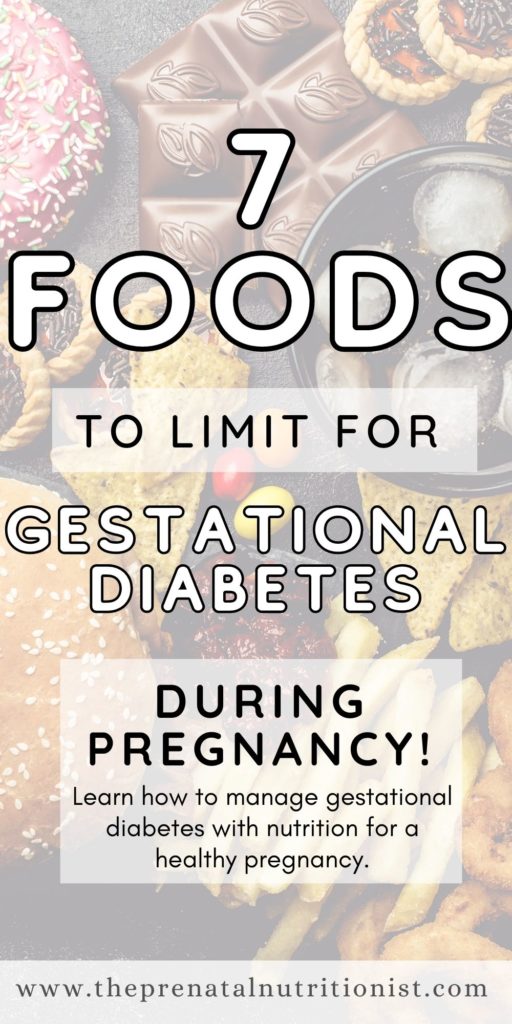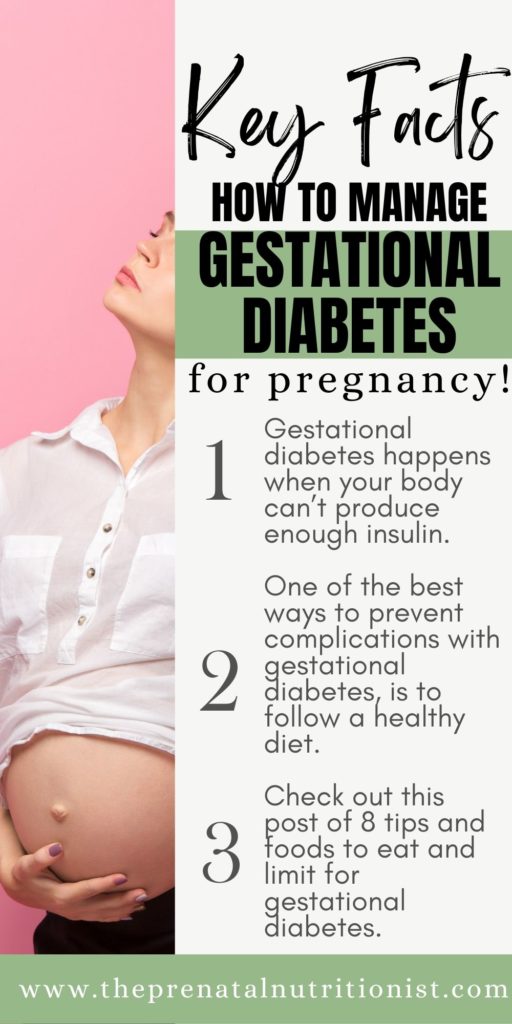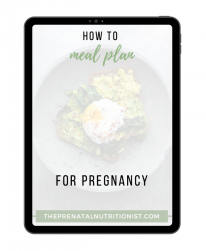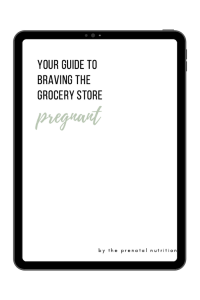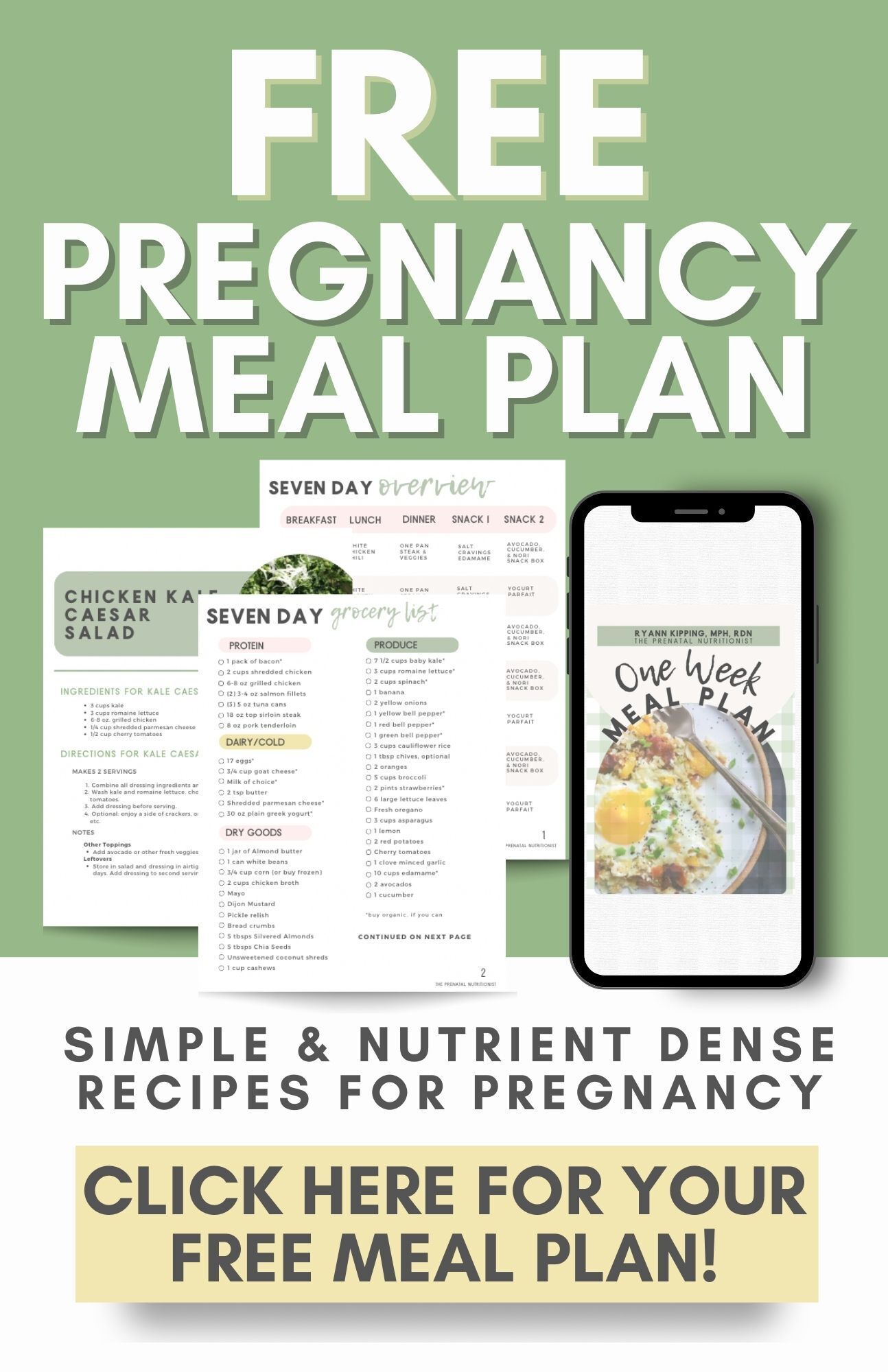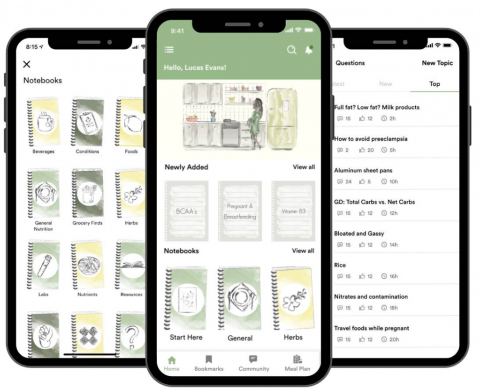
Gestational diabetes is a specific type of diabetes that can develop during pregnancy in people who don’t already have diabetes OR is first recognized during pregnancy (they may have had undiagnosed diabetes before). Up to 18% of pregnant women in the United States are diagnosed with gestational diabetes yearly. That’s why being armed with diet tips for gestational diabetes is vital.
When diagnosed with gestational diabetes, your body isn’t producing enough insulin. Insulin is a hormone made by the pancreas that controls the amount of glucose in your blood by moving it to your cells for energy. When the cells in your body use and respond to insulin less effectively, it’s a condition known as insulin resistance. As a result, the pancreas keeps making more insulin, and the cells continue to be less responsive. Eventually, the pancreas can’t keep up, and blood sugar levels rise.
During pregnancy, your body is in a “diabetic-like” environment. Meaning it’s normal for every pregnant woman to become slightly insulin-resistant. When diagnosed with gestational diabetes, insulin resistance is greater, and the pancreas can no longer compensate.
Unfortunately, gestational diabetes can cause various complications during pregnancy. One of the best ways to prevent complications and stay healthy during pregnancy, even with gestational diabetes, is to follow a healthy diet.
Proper nutrition can go a long way in better managing gestational diabetes. So, if you’re looking for diet tips for gestational diabetes, this post is for you. And, if you are ready to learn exactly what to eat to lower your blood sugar and deliver a healthy baby with gestational diabetes, join our feel-good GD course here (join through this link and get a BONUS 4-week meal plan).
8 Diet Tips For Gestational Diabetes
Check your blood sugar numbers.
The best way to determine what’s working for you is to test your blood sugar numbers. Knowing your numbers will help you understand how foods impact your blood sugar and if adjustments need to be made. For example, having this data could help determine how much carbohydrate is appropriate for you or if a particular meal needs more or less carbohydrate or protein.
There is no one-size-fits-all when it comes to meeting your nutritional needs and controlling blood sugar levels during pregnancy. However, regularly checking your blood sugars will help you make the right tweaks for you and allow you to stay on top of your numbers!
Ideally, test your blood sugar levels at least four times per day. Document your numbers fasting after breakfast, lunch, and dinner. You don’t have to check them after every snack, but you can just check in with yourself. Are you full? Energized? Too full? Fatigued? How you feel is a good indicator if an adjustment is needed too.
Speaking of snacks, check out my post on snacks for gestational diabetes for some fantastic healthy snack ideas!
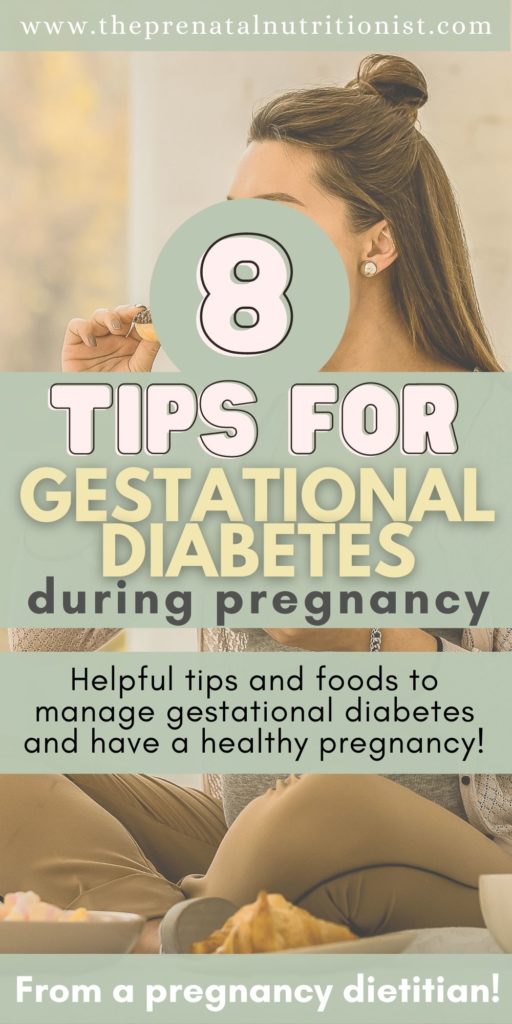
Be mindful of portion sizes for starchy foods.
Developing gestational diabetes doesn’t have to mean saying goodbye to starchy foods. Instead, you want to be more mindful of what you eat with starchy foods and how much you eat at once.
Everyone will tolerate a different amount of carbohydrates. But when you eat starchy (higher carbohydrate) foods like rice, grains, bread, potatoes, or noodles, keep your portion size in mind. One serving or one portion of carbohydrates = 15 g of carbohydrates. Be sure to include plenty of protein and fat in your meals!
Eat more fiber.
Fiber helps to maintain balanced blood sugar levels. It helps slow the rate at which carbohydrates are digested and absorbed. Use whole grains like oats, brown rice, quinoa, or barley instead of white or refined carbohydrates like white bread when choosing grains.
Other high-fiber foods for a gestational diabetes diet include produce, lentils, split peas, and beans like garbanzo beans, pinto beans, and red or black beans.
Limit fruit juice and sugary drinks.
Fruit juice might seem like a healthy choice, but when you consider how many pieces of fruit it takes to make a glass of juice, you’ll realize that juice is high in sugar. Plus, some options have added sugar, and juicing removes the bulk of the fiber. As mentioned above, fiber is a nutrient that supports healthy blood sugar levels.
Regular sodas and sugary soft drinks are also high in sugar and will cause a spike in your blood sugar levels. Check out my post on healthy beverages for pregnancy for some great alternative drink options.
Limit sweets and desserts.
This one probably doesn’t come as a surprise, but if you have gestational diabetes, we should be mindful of the number of sweets and desserts in the diet. However, that does NOT mean they need to be avoided altogether. Tweaks can be made to make desserts more blood-sugar friendly, such as making a “healthier” alternative or having dessert after eating a meal with plenty of protein.
Be mindful of sweeteners and sneaky added sugars.
Label reading is essential for pregnant people with gestational diabetes. Sugar and sweeteners can sneak their way into unexpected foods such as protein bars, yogurt, crackers, dressings, and condiments. There isn’t a “set limit” on added sugar for pregnancy. However, the general recommendation for outside of pregnancy for women is less than 25 grams of added sugar per day.
When given the option, it’s best to choose unsweetened or unflavored varieties and add a bit of sweetener yourself, as needed. For example, choose plain Greek yogurt versus a flavored variety and add some berries or a touch of honey.
Start your day with a protein-rich breakfast.
Start your day on the right foot by choosing a protein-rich breakfast. This will get your day started on the right foot. Everyone’s protein needs will differ, but at least 20 grams of protein at breakfast is a good minimum. Then, pay attention to your blood sugar levels, energy, and how you are feeling, and adjust to add more protein as needed.
Eggs make an excellent protein choice for breakfast. They also include choline, a hugely important nutrient for pregnancy. Breakfast sausage, bacon, ham, or even protein powder could also provide a bump of protein at breakfast. You can also find plenty of ideas in my post on gestational diabetes breakfast ideas.
Stick with whole fruits and pair them with protein and fat.
Fruit is loaded with nutrients, but it does contain carbohydrates and natural sugars. All people, including pregnant people with gestational diabetes, should aim to pair their fruits with protein and fat to manage blood sugar better—for example, berries and full-fat Greek yogurt (protein + fat). Stick with whole fruits versus fruit juice most of the time. Whole fruits have the benefit of fiber and being more satiating.
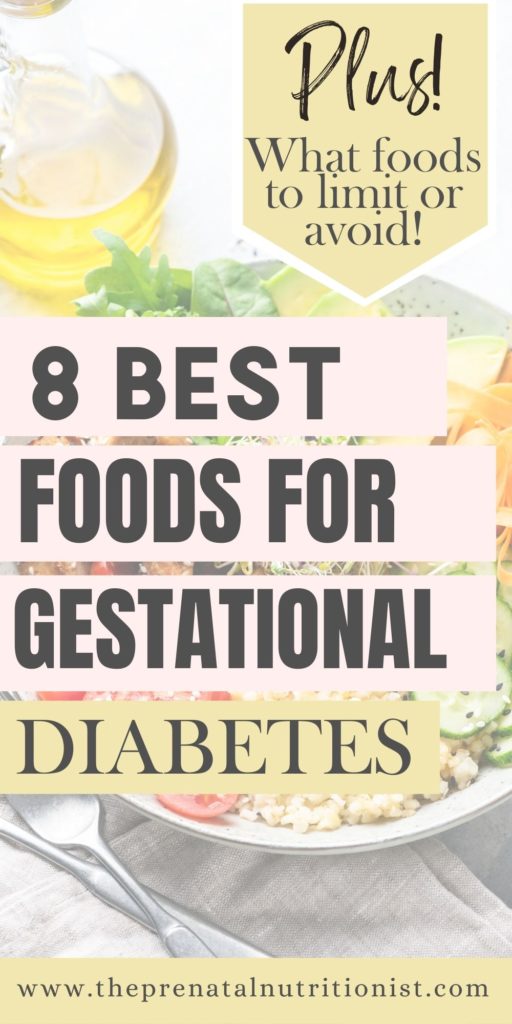
Best Foods To Eat For Gestational Diabetes
An overall well-balanced diet is key. Fill your plate with foods such as:
- Green, leafy vegetables (spinach, kale, romaine lettuce, cabbage, etc.)
- Bright-colored, non-starchy vegetables (bell peppers, celery, cucumbers, tomatoes)
- Fresh fruit (blueberries, strawberries, raspberries, etc.)
- Whole grains (whole-grain bread, quinoa, steel-cut oatmeal, etc.)
- Healthy fats (avocado, extra-virgin olive oil, nuts, seeds)
- Proteins (chicken, turkey, eggs, beef)
- Fish and seafood (salmon, white fish, etc.)
- Full-fat dairy (Greek yogurt, full-fat or whole milk, kefir, cheese, etc.)
Foods To Avoid For Gestational Diabetes
No food needs to be eliminated or avoided with gestational diabetes beyond the foods or beverages typically avoided during pregnancy (like alcohol). Of course, it’s best to be mindful of your intake of foods that can have a more significant impact on your blood sugar levels, such as:
- Candy
- Sweet treats
- Soda
- Fruit juices
- Refined, white carbohydrates like white bread
- Flavored yogurts
- Some types of snack bars/granola bars
But again, even a piece of birthday cake or your favorite Halloween candy can fit. Your overall diet is what matters most. You may need to adjust the portion size of carbohydrate foods and the balance of macronutrients at a meal.
The one thing I do recommend avoiding is “lonely” carbohydrates. Instead, let your carbohydrates have a friend. Friends are protein and fats. So, for example, instead of an apple by itself, pair it with nut butter (fat) or a hard-boiled egg (protein).
A well-balanced diet is one of the best ways to manage gestational diabetes and keep blood sugar levels in a controlled range.
We hope you enjoyed these diet tips for gestational diabetes. A gestational diabetes diagnosis can seem scary and overwhelming. But it doesn’t have to be! A few simple diet tweaks make a huge difference in managing blood sugar levels.
For expert guidance to manage gestational diabetes without giving up your favorite foods, join The Prenatal Nutrition Library’s Feel Good Gestational Diabetes Course and Meal Plan. The meal plan even includes multiple dessert recipes! So, start feeling confident managing gestational diabetes today. Click here! (and get a bonus meal plan!)


